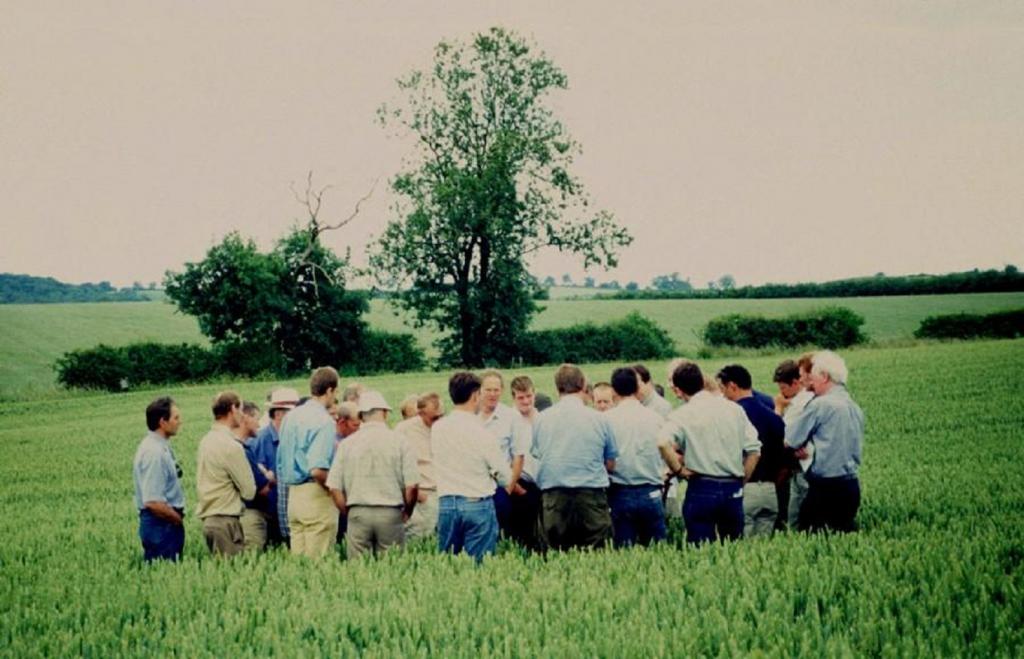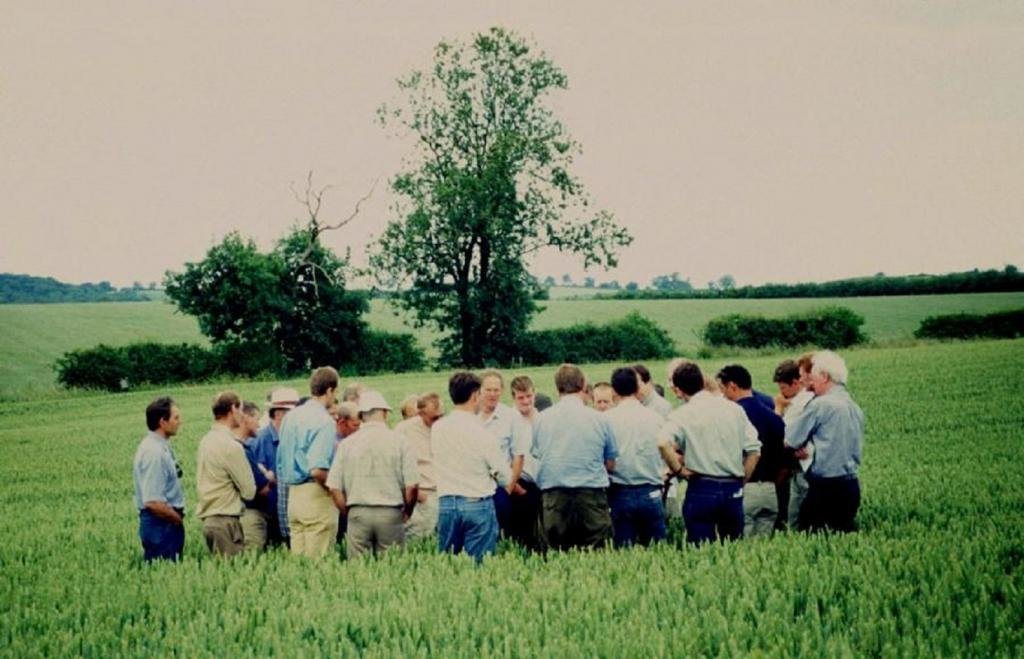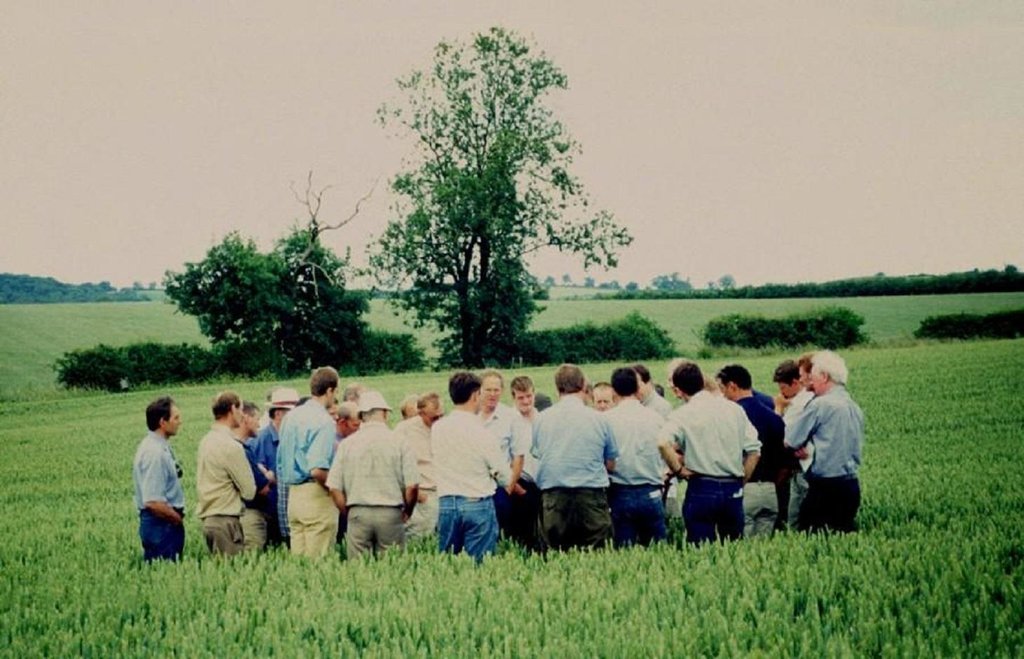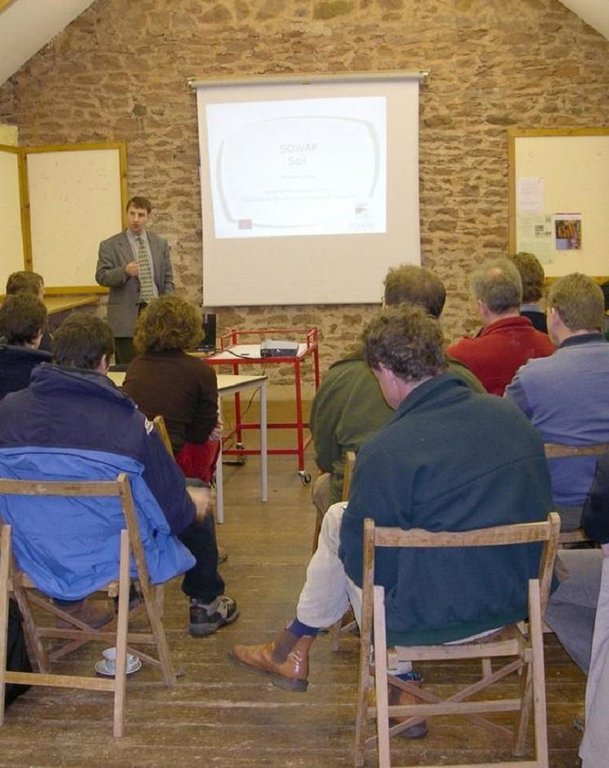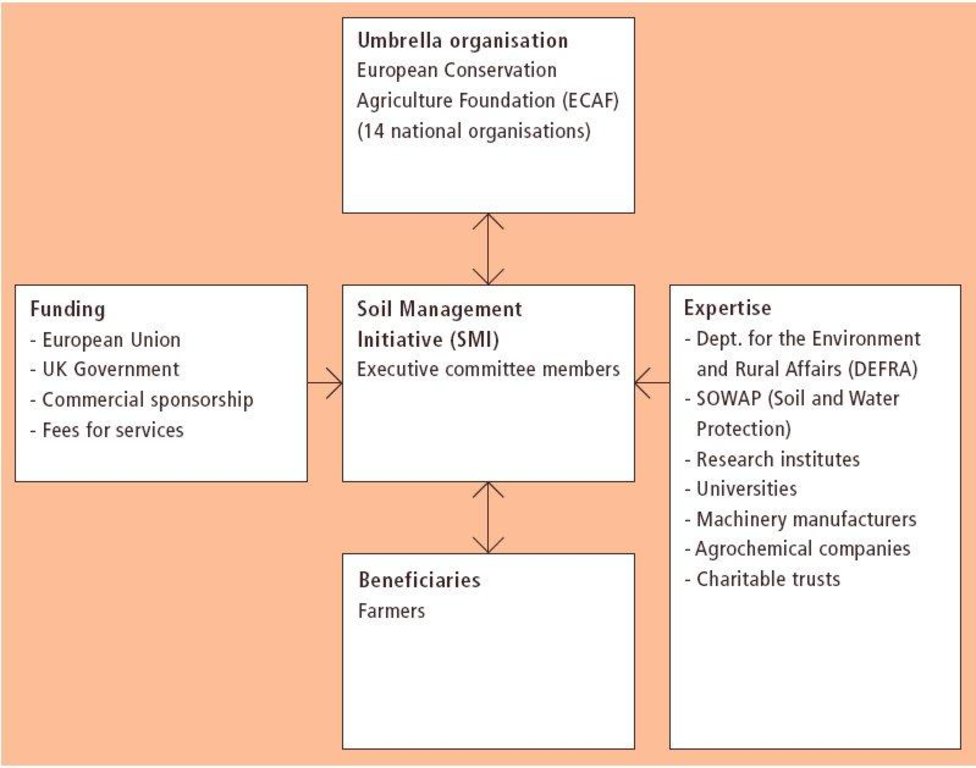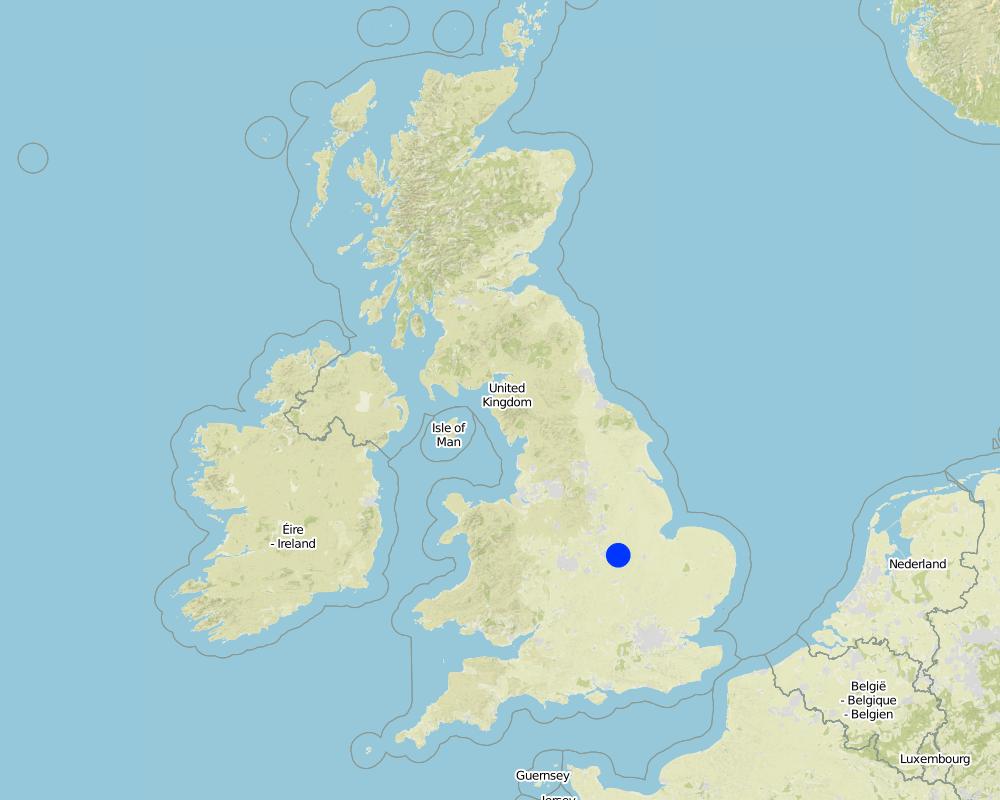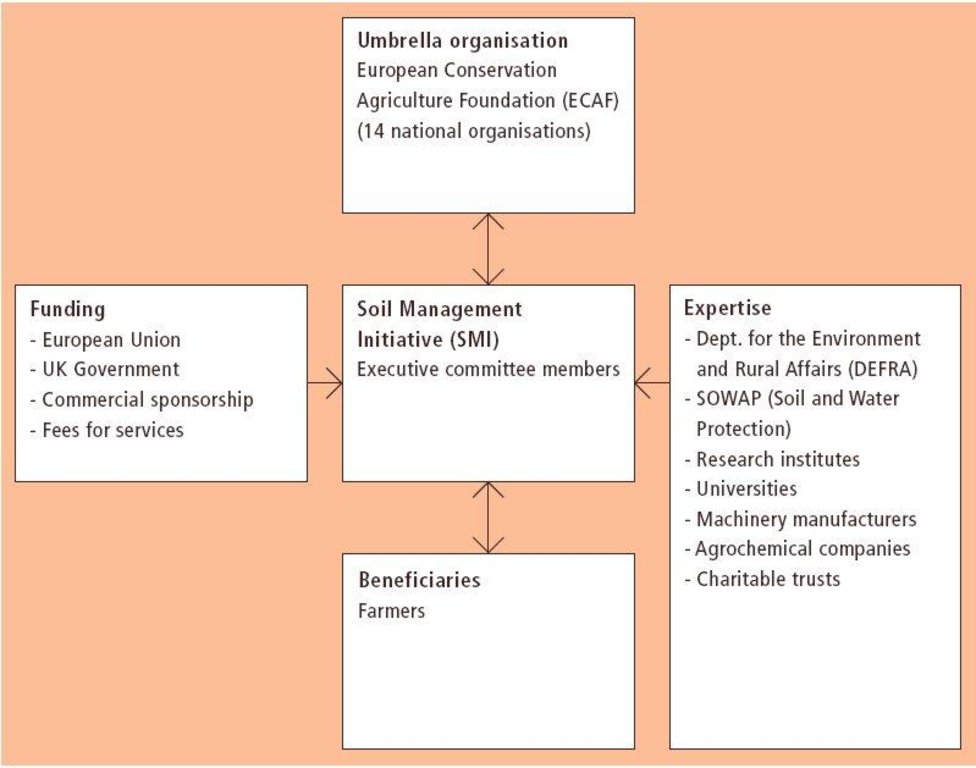Soil management initiative [Royaume-Uni]
- Création :
- Mise à jour :
- Compilateur : Alastaire Leake
- Rédacteur : –
- Examinateur : Fabian Ottiger
approaches_2620 - Royaume-Uni
Voir les sections
Développer tout Réduire tout1. Informations générales
1.2 Coordonnées des personnes-ressources et des institutions impliquées dans l'évaluation et la documentation de l'Approche
Nom du ou des institutions qui ont facilité la documentation/ l'évaluation de l'Approche (si pertinent)
UK Soil Management Initiative - Royaume-Uni1.3 Conditions relatives à l'utilisation par WOCAT des données documentées
Le compilateur et la(les) personne(s) ressource(s) acceptent les conditions relatives à l'utilisation par WOCAT des données documentées:
Oui
1.4 Références au(x) questionnaire(s) sur les Technologies de GDT
2. Description de l'Approche de GDT
2.1 Courte description de l'Approche
An independent organisation that promotes the adoption of appropriate soil management practices, especially conservation agriculture, within England.
2.2 Description détaillée de l'Approche
Description détaillée de l'Approche:
Aims / objectives: The zero tillage systems promoted in the UK during the 1970s were radical. Pioneering farmers moved from ploughing to zero tillage using special direct drilling machines and non-selective contact herbicides. However, they encountered serious problems with slugs, persistent grass weeds and straw, and zero tillage was largely abandoned. Pressures to reduce crop establishment costs then led to the intermediate method of ???conservation agriculture??? (CA). The Soil Management Initiative (SMI) has been central to the development and promotion of CA. SMI is an independent non-profit organisation that was established by a small, committed group in 1999. Its aim is to promote the adoption of cultivation systems which improve soil quality, minimise soil erosion and water pollution, and simultaneously maintain or enhance farm economic returns. SMI brings together organisations with varied expertise and technical abilities, and provides both research results and advice to the large numbers of farmers who are progressively adopting CA. Furthermore, SMI was a founder member of the European Conservation Agriculture Federation (ECAF), under which there are 14 national organisations. Competence within SMI is drawn from research institutes, educational establishments, farmers and landowners, machinery manufacturers, crop protection companies, charitable trusts, and from independent agronomists and advisers.
Methods: The EU Life fund provided an initial three-year allocation to support SMI. This ended in 2002. SMI now raises finance from the UK and EU governments, commercial sponsorship (international agrochemical and machinery companies) and fees paid by farmers. In the current climate of privatisation of advisory services, there is no targeted governmental advisory body to carry out such a function. DEFRA (The UK Government???s Department for Environment, Food and Rural Affairs) does however provide some support to SMI with both funds and expertise, and is an associate member. Amongst SMI???s methods for spreading the message of improved soil management are field days - where farmers pay to attend- an interactive web-based help-line on ???lo-till??? and farmers??? magazines. SMI also undertakes extension roadshows???, visiting specific farms for question and answer sessions. A formal session with presentations from experts precedes a practical outdoor demonstration. SMI gains knowledge and practical experience from the ???joint venture??? at Loddington (see associated technology).
2.3 Photos de l'approche
2.5 Pays/ région/ lieux où l'Approche a été appliquée
Pays:
Royaume-Uni
Région/ Etat/ Province:
Loddington, Leicestershire
Map
×2.6 Dates de début et de fin de l'Approche
Indiquez l'année de démarrage:
1999
2.7 Type d'Approche
- fondé sur un projet/ programme
2.8 Principaux objectifs de l'Approche
- improve technology transfer through extension to farmers
- promote agricultural and environmental policies to support sustainable soil management
- improve information exchange in and amongst the research, policy and practitioner communities and private companies (machinery and agrochemical etc)
- research, develop, evaluate and promote soil management systems to improve crop production and protection of the environment
The SLM Approach addressed the following problems:
-Attempts to apply conservation agriculture by arable farmers in the 1980s and 90s were not matched by an understanding of the whole system. There was a thirst for more knowledge.
-Privatisation of government advisory services has left a gap to be filled in this case an advisory body in sustainable soil management.
2.9 Conditions favorisant ou entravant la mise en œuvre de la(des) Technologie(s) appliquée(s) sous l'Approche
disponibilité/ accès aux ressources et services financiers
- entrave
SMI has needed to operate within a tight budget, and this was reduced further in 2002 when the 3-year allocation from the EU Life fund ended.
Treatment through the SLM Approach: The remedy has been to depend more on support from private companies (agrochemical and machinery) and payment by farmers for advice/attendance at field days.
cadre juridique (régime foncier, droits d'utilisation des terres et de l'eau)
- entrave
The existing land ownership, land use rights / water rights moderately hindered the approach implementation Ownership and the attitude of the owner towards CA can affect uptake significantly. For example, some landlords do not like tenants to practice conservation agriculture because ???it looks messy??? with trash lying on the surface rather than neatly ploughed fields.
connaissances sur la GDT, accès aux supports techniques
- entrave
Farmers lacked adequate knowledge regarding use of new CA implements, and emerging weed and pest control methods.
Treatment through the SLM Approach: SMI provides demand-driven technical support services.
3. Participation et rôles des parties prenantes impliquées dans l'Approche
3.1 Parties prenantes impliquées dans l'Approche et rôles
- exploitants locaux des terres / communautés locales
Differences between the participation of men and women: None in principle, though de facto most farmers are male, and they constitute the majority at field days.
- Spécialistes de la GDT/ conseillers agricoles
- gouvernement national (planificateurs, décideurs)
Govt. agencies
- contractors, environmentalists/researchers
3.2 Participation des exploitants locaux des terres/ communautés locales aux différentes phases de l'Approche
| Participation des exploitants locaux des terres/ communautés locales | Spécifiez qui était impliqué et décrivez les activités | |
|---|---|---|
| initiation/ motivation | passive | setting up SMI |
| planification | passive | setting up SMI |
| mise en œuvre | interactive | advisory services/demand-driven field events |
| suivi/ évaluation | passive | M&E of SMI's activities |
| Research | interactive | on-farm research on conservation agriculture |
3.3 Diagramme/ organigramme (si disponible)
Description:
Institutional framework: Linkages between the Soil Management Institute, the European Conservation Agriculture Foundation, funding agencies, research institutions, land users and producers of machiner
3.4 Prises de décision pour la sélection de la Technologie/ des Technologies
Indiquez qui a décidé de la sélection de la Technologie/ des Technologies à mettre en œuvre:
- les exploitants des terres seuls (auto-initiative)
Expliquez:
Decisions on the method of implementing the SLM Technology were made by by land users alone (self-initiative / bottom-up). (farmers)
4. Soutien technique, renforcement des capacités et gestion des connaissances
4.1 Renforcement des capacités/ formation
Une formation a-t-elle été dispensée aux exploitants des terres/ autres parties prenantes?
Oui
Thèmes abordés:
Technical demonstrations in the field are the primary means of knowledge transfer. A formal session with presentations from experts precedes a practical outdoor demonstration. Although conservation agriculture is the umbrella topic, specific issues - such as herbicide application are treated on demand.
4.2 Service de conseils
Les exploitants des terres ont-ils accès à un service de conseils?
Oui
Spécifiez si le service de conseils est fourni:
- dans les champs des exploitants?
- Weekly magazine and helpopline
Décrivez/ commentez:
Name of method used for advisory service: Roadshows; Key elements: visiting specific farms for question and answer sessions, an e-mail/website based lo-till helpline through the Farmers. Weekly magazine (www.fwi.co.uk). SMI furthermore contributes to frequent press articles as well as producing publications
4.3 Renforcement des institutions (développement organisationnel)
Des institutions ont elles été mises en place ou renforcées par le biais de l'Approche?
- non
4.4 Suivi et évaluation
Le suivi et l'évaluation font ils partie de l'Approche? :
Oui
Commentaires:
bio-physical aspects were regular monitored by project staff through measurements
technical aspects were regular monitored by project staff through measurements
socio-cultural aspects were ad hoc monitored by project staff through observations
economic / production aspects were regular monitored by project staff through measurements
area treated aspects were ad hoc monitored by project staff through measurements
management of Approach aspects were ad hoc monitored by project staff through observations
There were None changes in the Approach as a result of monitoring and evaluation: SMI is constantly refining its advice on the basis of results monitored from the field.
4.5 Recherche
La recherche a-t-elle fait partie intégrante de l’Approche?
Oui
Spécifiez les thèmes:
- sociologie
- économie/ marketing
- écologie
Donnez plus de détails et indiquez qui a mené ces recherches:
Conservation agriculture was initially supported by public funded research. Current research - through SMI but also some research institutes and farmers themselves - is focused on specific issues, including slug control, grass weeds, trash management and soil compaction. Recently, environmental, economic and social concerns arising from the practice of conventional agriculture have been taken up
5. Financement et soutien matériel externe
5.1 Budget annuel de la composante GDT de l'Approche
Commentez (par ex. principales sources de financement/ principaux bailleurs de fonds):
Approach costs were met by the following donors: international non-government (-): 10.0%; government (national government - DEFRA): 10.0%; international (European Union: EU Life Fund): 40.0%; local community / land user(s) (regional council): 10.0%; other (Companies: Monsanto,Syngenta): 30.0%
5.2 Soutiens financiers/ matériels fournis aux exploitants des terres
Les exploitants des terres ont-ils reçu un soutien financier/ matériel pour la mise en œuvre de la Technologie/ des Technologies?
Oui
Si oui, spécifiez le(s) type(s) de soutien, les conditions et les fournisseurs:
There are no subsidies specifically connected to CA or sustainable soil management. However, the CA principles fall within UK new cross-compliance conditions for the Single Farm Payment scheme which effectively constitutes a subsidy to farmers for following sound land management practices. There is also a recently introduced Environmental Stewardship Scheme, which embraces environmental concerns. Under this scheme, it is likely that much of the area under conservation agriculture will qualify for, at least, the entry-level category of subsidy, currently set at approx. US$ 60/ha/year: note: this is on top of the single farm payment, which will be considerably greater (for more details see www.defra.gov.uk). Manufacturers of non-inversion tillage equipment provide machines for demonstration. Manufacturers of biocides provided finance and support to specific farmers in the early stages of progressive development.
5.3 Subventions pour des intrants spécifiques (incluant la main d'œuvre)
- intrants agricoles
| Spécifiez les intrants subventionnés | Dans quelle mesure | Spécifiez les subventions |
|---|---|---|
| Biocides | en partie financé | |
Si la main d'œuvre fournie par les exploitants des terres était un intrant substantiel, elle était:
- volontaire
Commentaires:
Farmers themselves provide labour though the adoption of conservation agriculture involves a considerable saving
5.4 Crédits
Des crédits ont-ils été alloués à travers l'Approche pour les activités de GDT?
Non
6. Analyses d'impact et conclusions
6.1 Impacts de l'Approche
Est-ce que l'Approche a aidé les exploitants des terres à mettre en œuvre et entretenir les Technologies de GDT?
- Non
- Oui, un peu
- Oui, modérément
- Oui, beaucoup
erosion reduced, organic matter built up, nitrate losses reduced etc
Did other land users / projects adopt the Approach?
- Non
- Oui, un peu
- Oui, modérément
- Oui, beaucoup
There are other similar service providers in different aspects of farming, though not in soil management.
6.3 Durabilité des activités de l'Approche
Les exploitants des terres peuvent-ils poursuivre ce qui a été mis en œuvre par le biais de l'Approche (sans soutien extérieur)?
- oui
Si oui, décrivez de quelle manière:
SMI can continue to support land users with advice as long as they are prepared to continue paying for the services, and sponsorship continues from agencies and commercial companies. Land users can continue to practice CA without external support - but services such as those provided by SMI are extremely valuable.
6.4 Points forts/ avantages de l'Approche
| Points forts/ avantages/ possibilités du point de vue du compilateur ou d'une autre personne ressource clé |
|---|
| Has successfully stimulated conservation agriculture, which should in turn ultimately lead to environmentally sound and sustainable land management in England (How to sustain/ enhance this strength: Continue operations for as long as possible) |
| SMI has acted effectively as a channel for making results from research, and a wide body of experience, readily available to farmers (How to sustain/ enhance this strength: Continue to focus on farmers as the main target group and link them with research and private companies.) |
| SMI has managed to combine the efforts and expertise of a wide range of actors towards a common goal: to provide a unique advisory service in conservation agriculture (How to sustain/ enhance this strength: Continue to serve as a centre of excellence.) |
| Improvements in soil management techniques have been documented in an accessible way (How to sustain/ enhance this strength: Continue to publish simply and clearly as new messages develop.) |
| Ad hoc advice available via a web-based helpline (How to sustain/ enhance this strength: Continue.) |
6.5 Faiblesses/ inconvénients de l'Approche et moyens de les surmonter
| Faiblesses/ inconvénients/ risques du point de vue du compilateur ou d'une autre personne ressource clé | Comment peuvent-ils être surmontés? |
|---|---|
| SMI has an on-going problem with adequacy of funding | Through top-class services, continue to attract funds and voluntary contributions from a wide range of actors. |
7. Références et liens
7.1 Méthodes/ sources d'information
- visites de terrain, enquêtes sur le terrain
- interviews/entretiens avec les exploitants des terres
7.2 Références des publications disponibles
Titre, auteur, année, ISBN:
Soil Management Initiative/Department for Environment, Food and Rural Affairs (DEFRA) (undated) A guide to managing cropManagement Initiative (undated) Improved soil management for agronomic and environmentalSoil Management Initiative/V??derstad (undated) Target on establishment: innovation for the future of farming.
Disponible à partir d'où? Coût?
(www.smi.org.uk)SMI, UKSMI, UK
Titre, auteur, année, ISBN:
Management Initiative (undated) Improved soil management for agronomic and environmental
Disponible à partir d'où? Coût?
SMI, UK
Titre, auteur, année, ISBN:
Soil Management Initiative/V??derstad (undated) Target on establishment: innovation for the future of farming.
Disponible à partir d'où? Coût?
SMI, UK
Liens et modules
Développer tout Réduire toutLiens
Aucun lien
Modules
Aucun module trouvé


